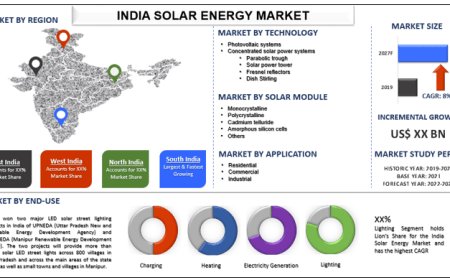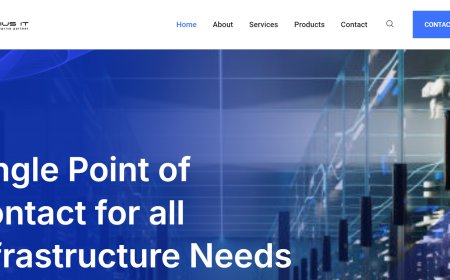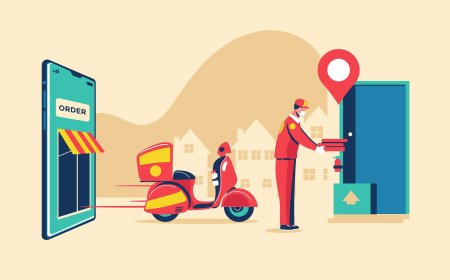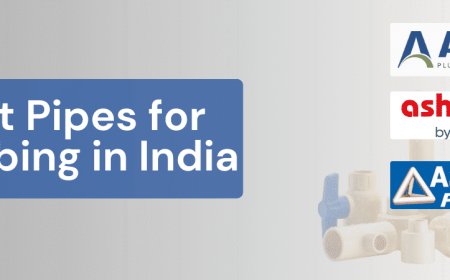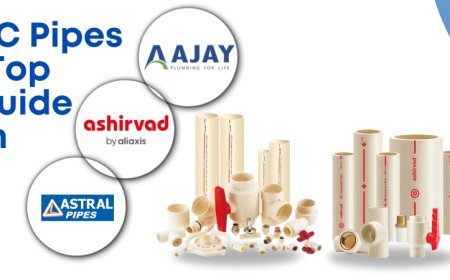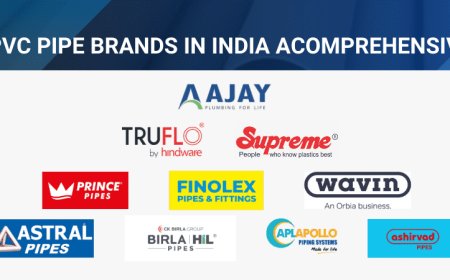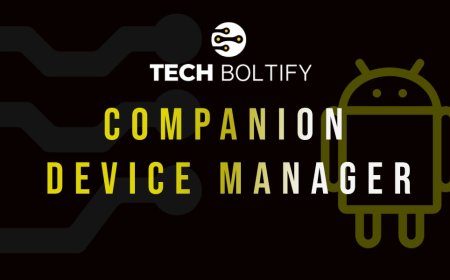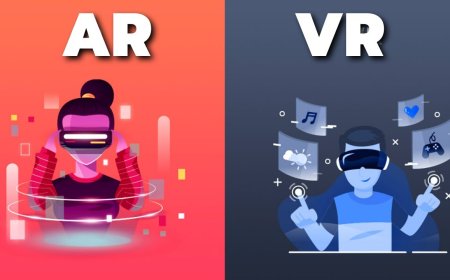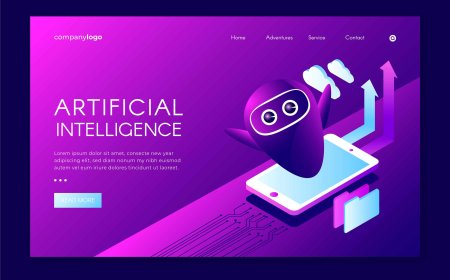How Layer 2 Blockchain Solutions Are Revolutionizing Decentralized Apps (DApps)
Discover how Layer 2 blockchain solutions are transforming decentralized applications (DApps) by enabling faster transactions, lower fees, and improved scalability. Learn about real-world use cases, benefits, and the future of Layer 2 in Web3 development.

The decentralized application (DApp) ecosystem has experienced explosive growth over the past few years, redefining how we interact with digital finance, social networks, and even gaming. However, one persistent challenge remains scalability. As the number of DApp users has surged, Layer 1 blockchains like Ethereum have faced bottlenecks: slow transaction speeds, high gas fees, and network congestion. Layer 2 blockchain solutions.
These off-chain scaling technologies are reshaping the way DApps operate, offering faster, cheaper, and more efficient user experiences while retaining the security of Layer 1 chains. This blog delves deep into how Layer 2 solutions are revolutionizing decentralized applications in 2025 and beyond.
What Are Layer 2 Blockchain Solutions?
Layer 2 (L2) refers to protocols built on top of Layer 1 blockchains (like Ethereum, Bitcoin, or Solana) to enhance scalability and performance without compromising the base layer's security and decentralization.
These solutions execute transactions off-chain and then post final proofs or summaries to the Layer 1 chain. The result? Lower fees, faster transactions, and improved throughput.
Types of Layer 2 Solutions:
-
Rollups (Optimistic and ZK-Rollups)
-
State Channels
-
Plasma Chains
-
Sidechains
-
Validium
Each of these solutions offers unique advantages based on the use case, but rollups especially ZK-Rollups are leading the charge in modern DApp ecosystems.
The Scalability Challenge for DApps
DApps rely on blockchain networks to execute smart contracts and facilitate peer-to-peer interactions. While this ensures transparency and trustlessness, it often comes at the cost of speed and affordability.
Key Issues with Layer 1 Networks:
-
Transaction Throughput: Ethereum processes ~15 TPS (transactions per second).
-
Gas Fees: Users sometimes pay exorbitant fees just to interact with a DApp.
-
Network Congestion: High traffic during NFT drops or DeFi activity causes bottlenecks.
-
User Friction: Slow and expensive transactions deter mainstream adoption.
Layer 2 aims to eliminate these pain points while still leveraging the security of the main blockchain.
How Layer 2 Is Transforming DApps
1. Faster and Cheaper Transactions
Layer 2 solutions drastically reduce the cost and time of executing smart contracts and transactions.
Case in Point:
Polygon, a popular Layer 2 network for Ethereum, brings transaction costs down to a fraction of a cent and enables thousands of TPS. For DApps focused on microtransactions, such as play-to-earn games or social tipping platforms, this scalability is crucial.
2. Enhanced User Experience
Low latency and reduced fees directly impact user satisfaction. DApps built on L2 networks offer smoother onboarding, quicker interactions, and more responsive UX essential for attracting non-crypto-savvy users.
3. Enabling Complex Applications
Certain DApps, like decentralized exchanges (DEXs) or on-chain games, require high-frequency transactions that would be prohibitively expensive on Layer 1. Layer 2 enables these applications to scale without sacrificing performance.
Example:
Immutable X, built using ZK-Rollup technology, allows NFT trading with zero gas fees while maintaining Ethereum-level security.
4. Improved Developer Ecosystem
Layer 2 ecosystems offer better development tools, SDKs, and integrations, making it easier for developers to build and scale DApps. Many L2s are Ethereum Virtual Machine (EVM) compatible, allowing existing DApps to port over with minimal changes.
5. Cross-Chain Interoperability
Many L2 solutions are working on or supporting cross-chain communication, which helps DApps expand their reach and tap into liquidity and users from multiple blockchains.
Real-World Applications of Layer 2 in DApps
a. DeFi (Decentralized Finance)
DeFi platforms need to execute millions of trades, loans, and staking activities every day. With Layer 2:
-
Traders experience faster order matching.
-
Lenders and borrowers get better APYs due to reduced costs.
-
Projects can launch scalable token economies without pricing out smaller investors.
Popular L2 DeFi Projects:
-
dYdX (derivatives on StarkEx)
-
SushiSwap on Arbitrum
-
Aave v3 on Optimism
b. NFT Marketplaces
NFT minting and trading are notoriously gas-intensive on Ethereum. Layer 2 offers a seamless alternative.
-
Artists can mint NFTs without upfront costs.
-
Buyers and sellers trade instantly and affordably.
-
Projects can enable high-volume in-game NFT economies.
Notable Platforms:
-
Zora on Optimism
-
OpenSea with Arbitrum and Optimism integrations
-
Immutable X for gas-free NFT trading
c. Gaming and the Metaverse
Blockchain games generate thousands of transactions per minute from in-game purchases to player interactions.
-
L2 solutions make real-time gaming on-chain viable.
-
Developers can create complex virtual economies with low-cost interactions.
-
Players enjoy low-latency performance akin to traditional gaming.
Examples:
-
Gods Unchained on Immutable X
-
Decentral Games on Polygon
-
TreasureDAO on Arbitrum Nova
d. DAOs and Governance
Layer 2 enables efficient voting, proposal submissions, and governance participation making DAOs more accessible to the average token holder.
-
Gasless voting mechanisms
-
Real-time tallying
-
Incentivized participation through micro-rewards
The Future of Layer 2 and DApp Development
Layer 2 is not just a temporary fix; it is a core component of the blockchains future. Ethereums roadmap itself prioritizes rollups in its rollup-centric vision, and new ecosystems like zkSync, Base, and StarkNet are growing rapidly.
Key Trends to Watch:
-
L2-as-a-Service Platforms: Custom rollup development tools will empower more DApps to launch their own chains.
-
Composability Across Layers: Seamless integration between L1 and L2 will support complex, interconnected DApps.
-
Decentralized Identity (DID) and Layer 2: Faster verifications and scalable identity systems will evolve on L2 networks.
-
Hybrid Models: Combining L2 with off-chain oracles, AI agents, and zero-knowledge proofs for ultra-efficient decentralized systems.
Challenges and Considerations
Despite the advantages, Layer 2 adoption is not without its hurdles:
-
Liquidity Fragmentation
Users and capital are spread across many L2s, impacting network effects. -
User Confusion
Bridging assets, understanding L2 wallets, and navigating interfaces still require improvement. -
Security Assumptions
Some rollups rely on centralized sequencers or validators, raising concerns. -
Developer Fragmentation
Different L2s have varying standards, documentation, and tooling.
However, with the rapid progress of solutions like account abstraction, unified wallets, and native L2 integrations by wallets like MetaMask and Coinbase, these issues are steadily being addressed.
Conclusion
Layer 2 blockchain solutions are not just enhancing DApps theyre redefining them. By overcoming the scalability trilemma, Layer 2 makes decentralized applications faster, cheaper, and more accessible to the masses.From frictionless DeFi and NFT minting to immersive Web3 games and scalable DAO governance, the possibilities are boundless. For developers, entrepreneurs, and investors, now is the time to explore and build on Layer 2.















